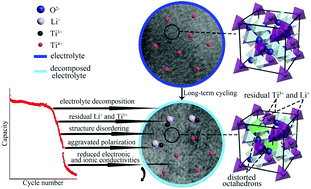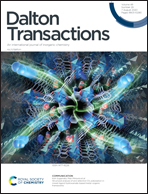Capacity degradation of Li4Ti5O12 during long-term cycling in terms of composition and structure†
Abstract
Capacity fading of Li4Ti5O12 (LTO) is inevitable during cycling; hence it is of great significance to clarify the factors causing the capacity degradation so as to take some measures to prolong the lifespan of LTO. Despite the investigation on the capacity fading mechanism within finite charge/discharge cycles, the fading mechanism during long-term cycling is still absent. Here, LTO half-cells underwent more than 700 lithiation/delithiation cycles at a current rate of 0.5 A g−1, and the changes in structure, composition, cyclic voltammogram and electrochemical impedance with cycling were probed systematically to comprehend the capacity decay. Except for the performance degradation that resulted from the electrolyte decomposition and gassing effect during cycling, the transition from spinel LTO to rock-salt Li7Ti5O12 accompanied by structural and compositional variation also leads to a capacity fading of LTO, namely, the repetitive lithiation/delithiation gives rise to more and more residual Li+ and Ti3+ in the delithiated LTO, structure disordering, gradually depressed ionic and electronic conductivities, and escalated polarization, thus aggravating the performance decay.



 Please wait while we load your content...
Please wait while we load your content...